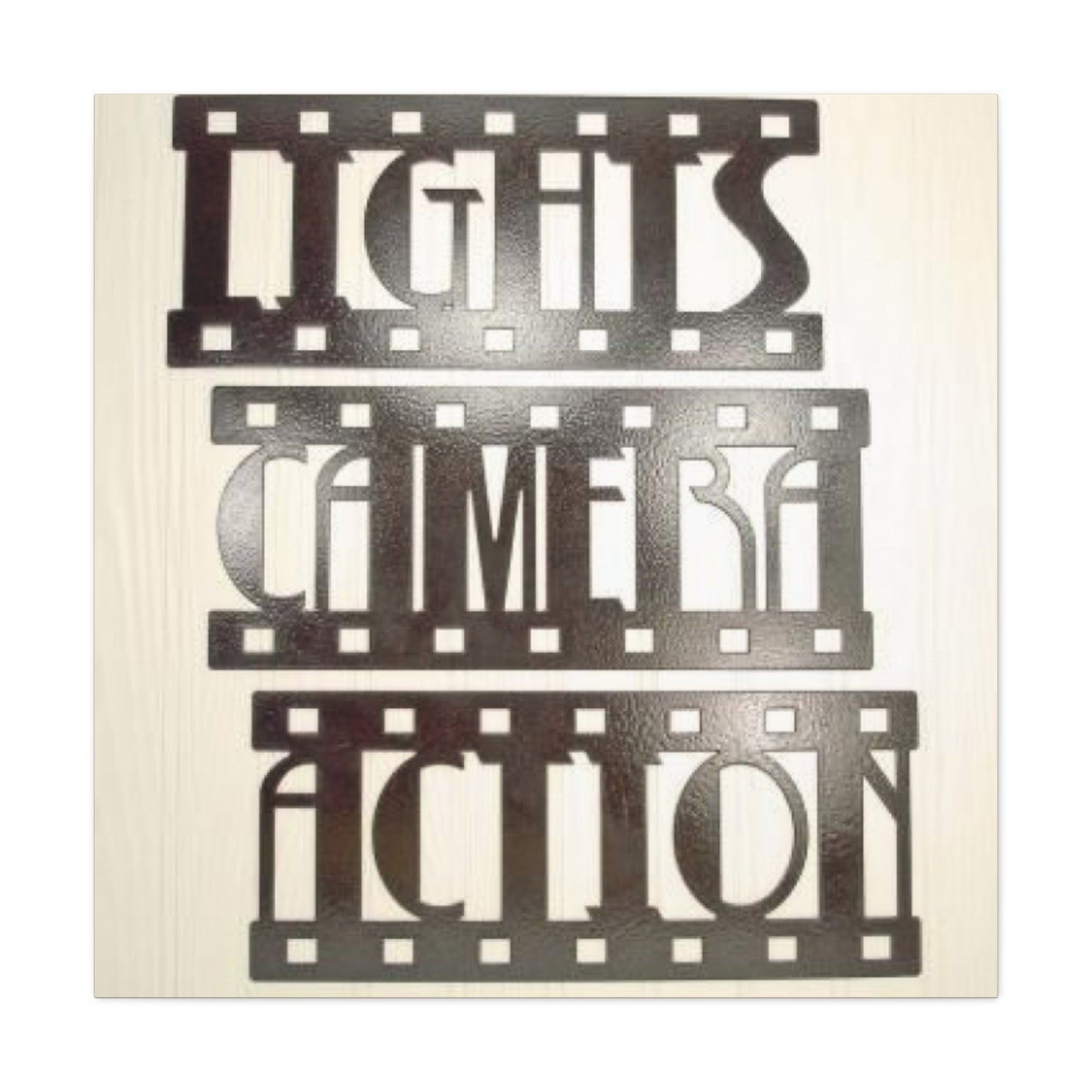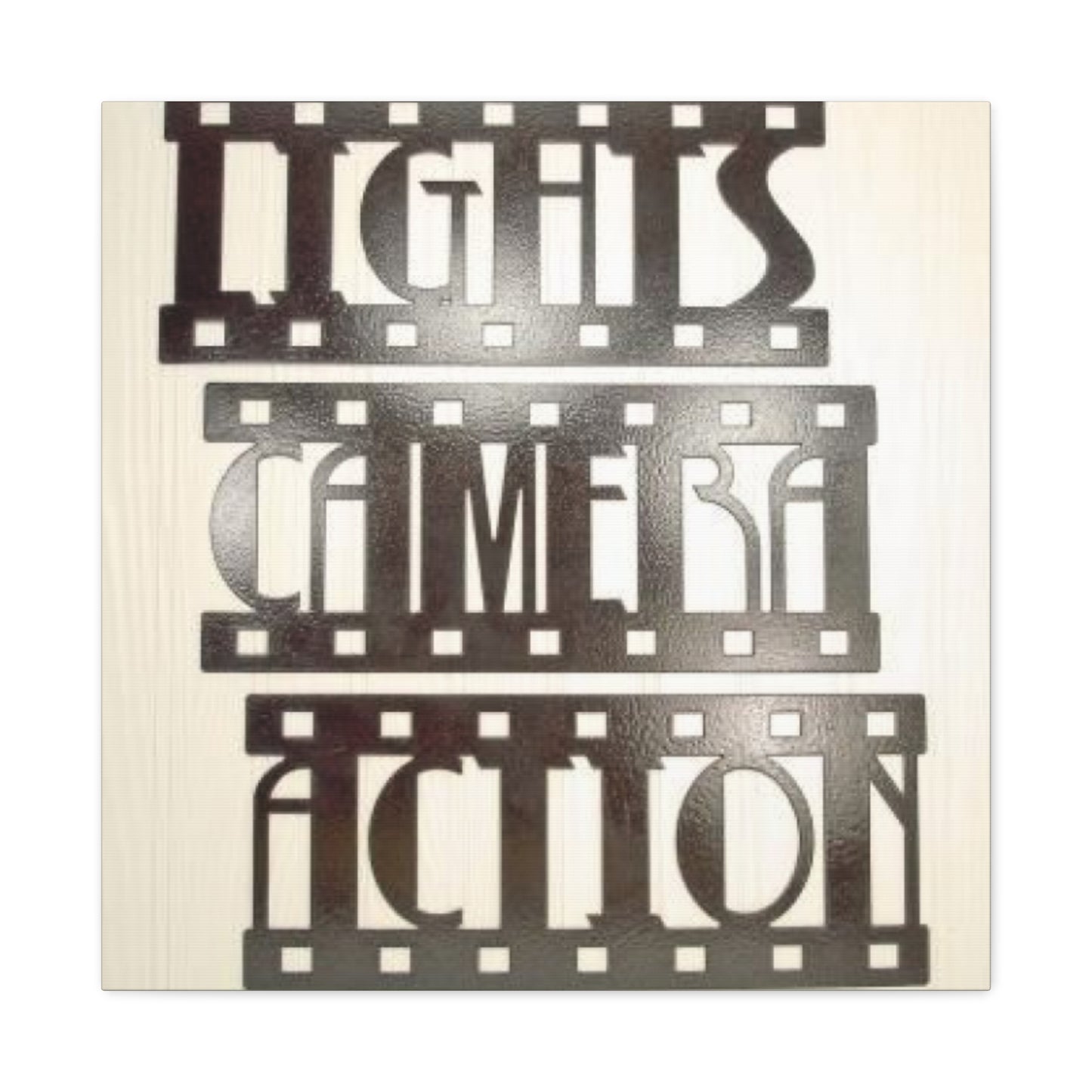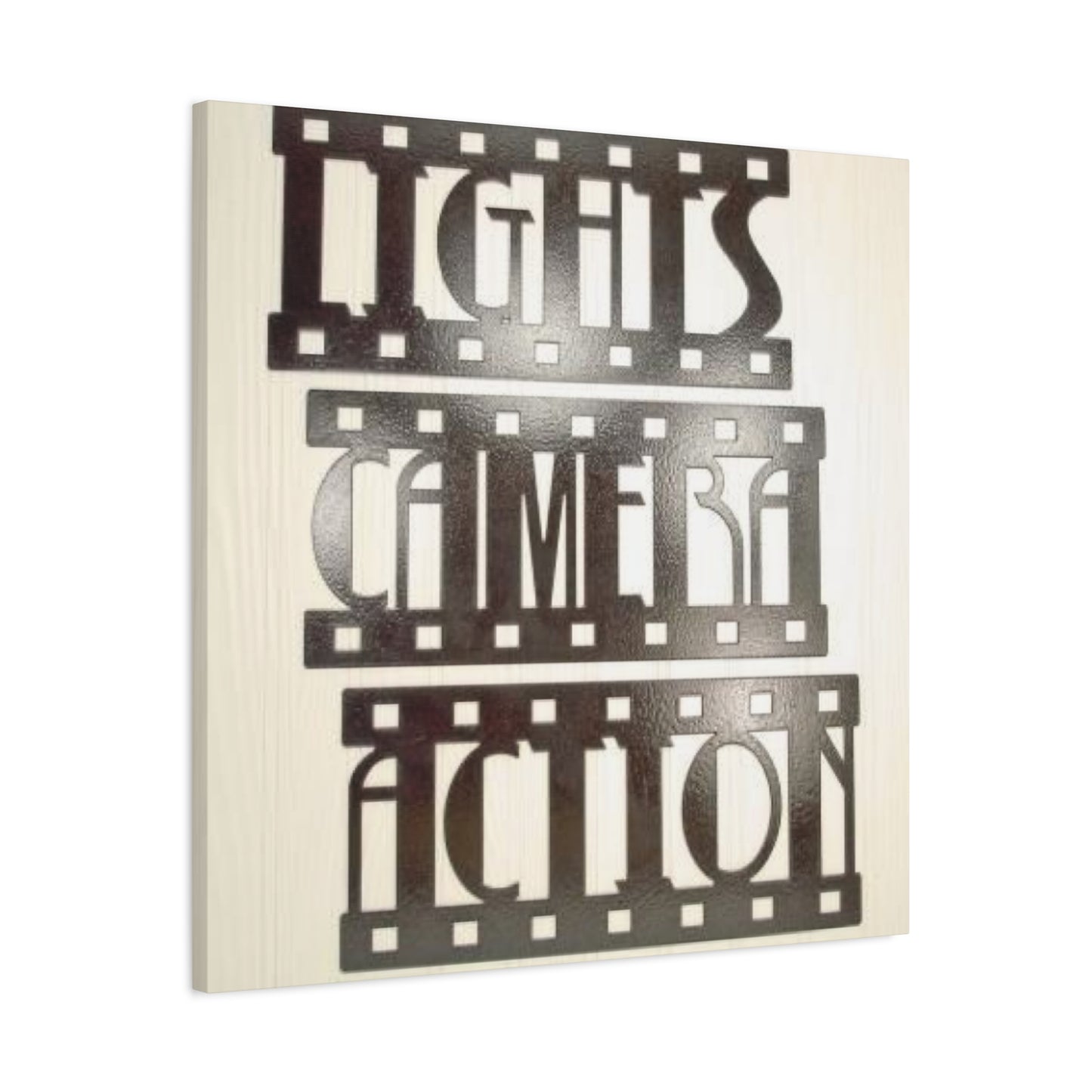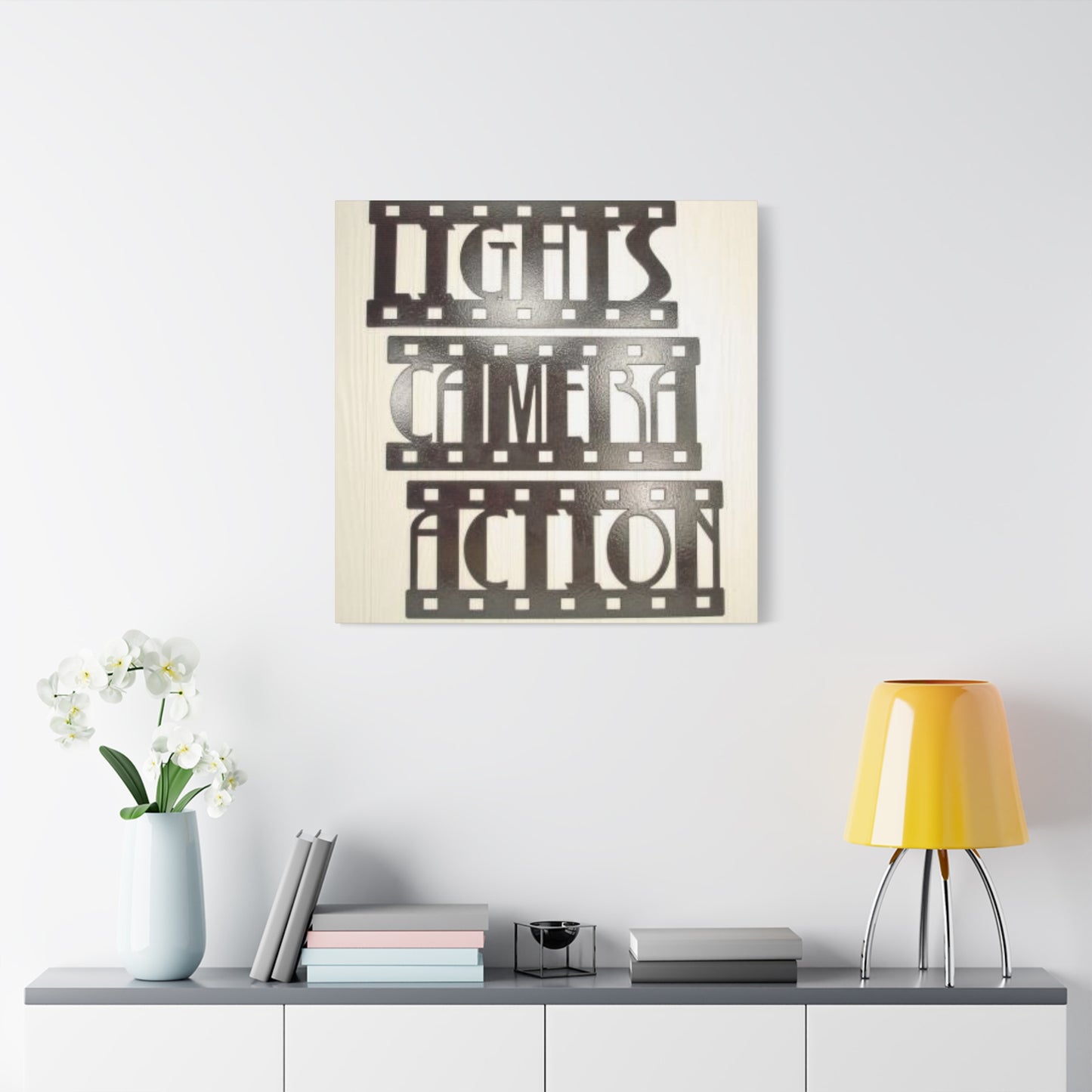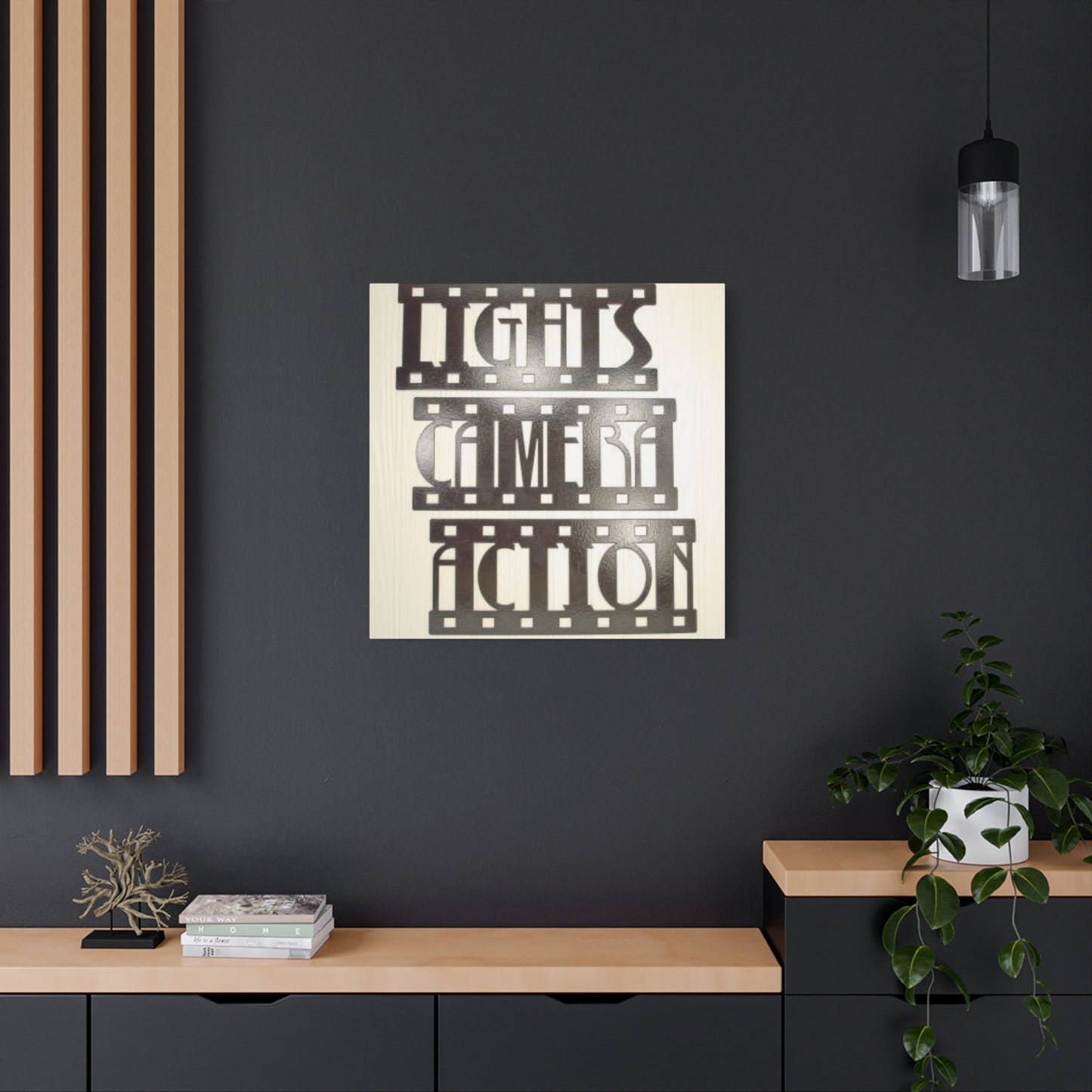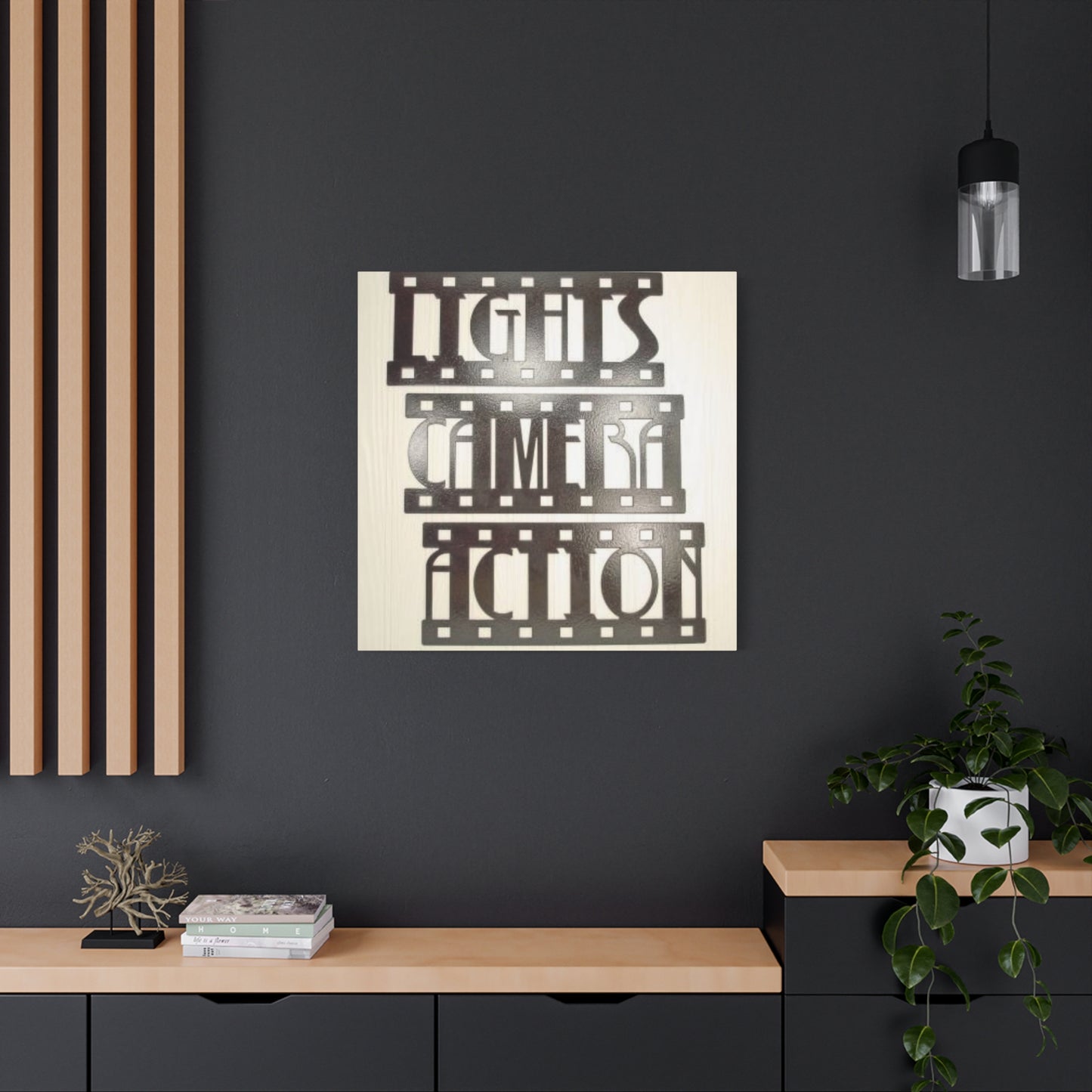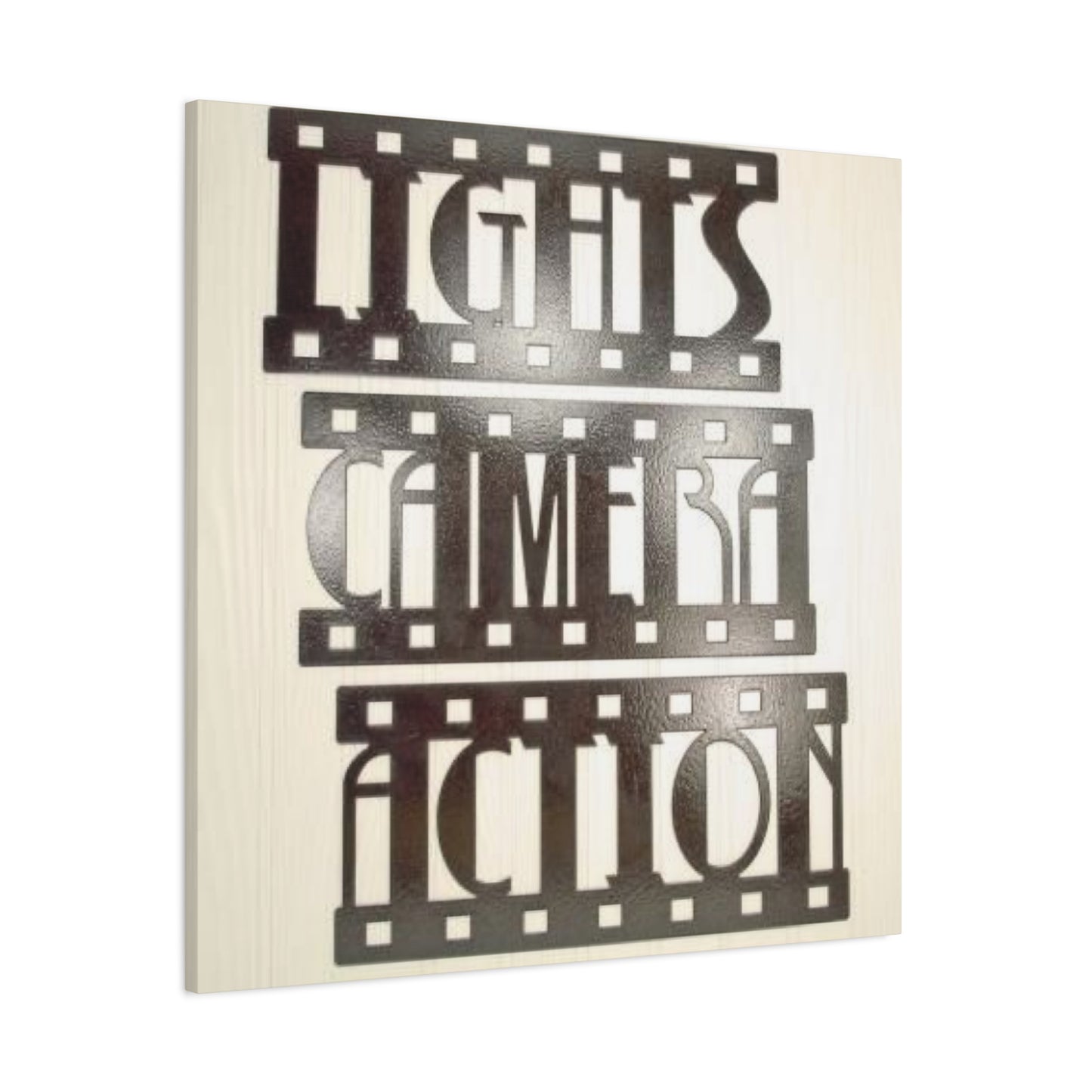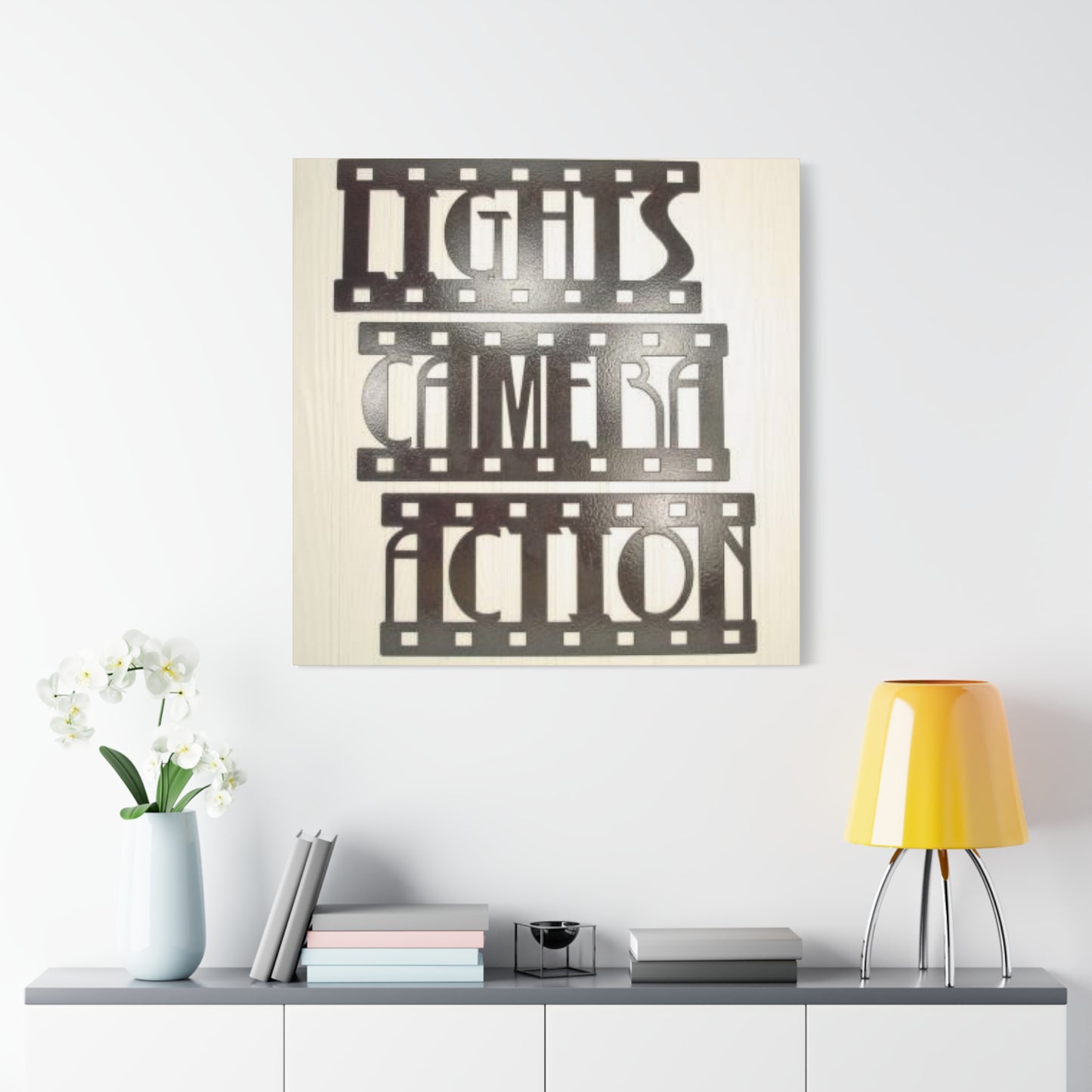The Ultimate Guide to Lights, Camera, Action Wall Art for Movie Lovers and Collectors
The world of entertainment has always held a special place in our hearts, influencing not just our leisure time but also how we choose to decorate our living spaces. Movie-inspired wall decorations have become increasingly popular among homeowners, interior designers, and entertainment enthusiasts who want to bring the magic of cinema into their everyday lives. These artistic pieces serve as more than simple decorative elements; they represent our connection to storytelling, our favorite films, and the emotional experiences we associate with the silver screen.
When you incorporate film-inspired artwork into your home, you create an atmosphere that reflects your personality and passion for cinema. These decorative pieces can transform any room into a personal gallery that celebrates the art of filmmaking. Whether you are a casual movie watcher or a devoted cinephile, having these visual reminders of your favorite medium creates a unique ambiance that sparks conversations and evokes nostalgia.
The beauty of cinema-themed decorations lies in their versatility. They can complement various interior design styles, from modern minimalist spaces to vintage-inspired rooms. The theatrical elements captured in these artworks bring energy and character to otherwise plain walls, making them focal points that draw attention and admiration from visitors.
The Historical Significance of Movie Industry Imagery in Art
The relationship between cinema and visual art extends back to the early days of motion pictures. When films first captivated audiences in the late nineteenth and early twentieth centuries, artists began incorporating cinematic elements into their work. This cross-pollination between mediums has continued to evolve, creating a rich tradition of movie-inspired artwork that resonates with people across generations.
During the golden age of Hollywood, promotional posters and lobby cards became collectible items that transcended their original marketing purpose. These pieces of ephemera evolved into legitimate art forms, appreciated for their design aesthetics and cultural significance. Today, contemporary artists draw inspiration from this legacy, creating new interpretations of classic cinematic imagery that appeal to modern sensibilities while honoring the history of film.
The iconography associated with filmmaking has become universally recognizable. Symbols like director's chairs, clapperboards, film reels, and vintage cameras evoke immediate associations with the movie industry. These visual elements carry cultural weight and nostalgic value, making them powerful design components for home decoration. When you display such imagery in your living space, you participate in a long tradition of celebrating cinema as both entertainment and art form.
Exploring Different Styles of Movie-Inspired Canvas Artwork
The market for cinema-themed wall decorations offers an impressive variety of artistic styles to suit different tastes and interior design preferences. Vintage-style prints often feature distressed textures, sepia tones, and retro typography that evoke the classic era of filmmaking. These pieces work exceptionally well in spaces with traditional or shabby chic decor, adding character and a sense of history to the room.Contemporary designs take a more minimalist approach, using clean lines, bold colors, and modern typography to create striking visual statements. These pieces often incorporate geometric shapes and abstract representations of filmmaking equipment, appealing to those who prefer sleek, updated aesthetics in their homes. The simplicity of these designs allows them to integrate seamlessly into modern living spaces without overwhelming other decorative elements.
Photorealistic artwork captures the intricate details of movie production equipment and environments with stunning accuracy. These pieces appeal to those who appreciate technical precision and want their wall art to showcase the craftsmanship of both the artist and the filmmaking tools depicted. High-quality canvas prints in this style can create the illusion of three-dimensional depth, making the artwork feel almost tangible.Abstract interpretations of cinema themes offer a more artistic and open-ended approach to movie-inspired decoration. These pieces might use splashes of color to represent the emotional impact of film, or employ unconventional compositions that challenge traditional representations of filmmaking imagery. Such artwork appeals to those who want their decor to spark imagination and invite multiple interpretations.
The Psychology Behind Decorating with Entertainment Themes
Choosing to decorate your home with movie-inspired artwork reflects deeper psychological needs and desires. Our living spaces serve as extensions of our identity, and the decorative choices we make communicate aspects of our personality, interests, and values to ourselves and others. When you select cinema-themed decorations, you signal your appreciation for storytelling, creativity, and the artistic medium of film.These decorative choices also fulfill our need for environmental personalization. Psychologists have long recognized that people feel more comfortable and content in spaces that reflect their individuality. By incorporating elements that represent your passion for movies, you create a home environment that feels authentically yours, which can reduce stress and increase overall wellbeing.
The presence of familiar imagery in our surroundings provides psychological comfort. Movie-related artwork can evoke positive memories associated with favorite films, special occasions spent at theaters, or shared viewing experiences with loved ones. These emotional connections transform simple wall decorations into meaningful objects that contribute to the emotional atmosphere of your home.Furthermore, thematic consistency in home decoration creates visual harmony that our brains find pleasing. When you develop a cinema theme throughout a room or entire home, you establish a cohesive aesthetic narrative that feels intentional and well-designed. This sense of order and purpose in our environment contributes to feelings of control and satisfaction with our living space.
Selecting the Perfect Size for Your Canvas Display
Determining the appropriate dimensions for your wall artwork requires careful consideration of multiple factors. The size of the wall space itself provides the primary constraint, but you should also consider the room's overall proportions, furniture placement, and viewing distances. A piece that looks perfect in a showroom might overwhelm a small space or get lost on a large, empty wall.For walls above sofas or beds, interior designers typically recommend artwork that spans approximately two-thirds to three-quarters of the furniture width. This proportion creates visual balance and ensures the artwork feels connected to the furniture rather than floating arbitrarily on the wall. However, these guidelines can be adjusted based on personal preference and the specific characteristics of your space.
In rooms with high ceilings, vertical or large-scale artwork can help fill the visual space and prevent the room from feeling empty or disconnected. Conversely, horizontal pieces work well in rooms with standard ceiling heights, creating the illusion of wider spaces. Understanding these spatial relationships helps you choose dimensions that enhance rather than detract from your room's architecture.Gallery walls composed of multiple smaller pieces offer flexibility for those who want to create a more dynamic display. This approach allows you to combine different sizes and orientations of cinema-themed artwork, building a curated collection that grows over time. When planning a gallery wall, lay out your arrangement on the floor first to experiment with different configurations before committing to hanging.
Color Schemes and Their Impact on Room Atmosphere
The colors featured in your chosen artwork significantly influence the mood and atmosphere of your space. Movie-themed pieces often incorporate classic color palettes associated with cinema, such as black and white for vintage appeal, or rich reds and golds that evoke theatrical elegance. Understanding color psychology helps you select pieces that create your desired emotional environment.Black and white or monochromatic pieces offer timeless sophistication and versatility. These artworks adapt easily to changing color schemes in your room, ensuring your investment remains relevant even as your decorating preferences evolve. The high contrast in black and white imagery also creates strong visual impact, making these pieces effective focal points.
Warm colors like reds, oranges, and golds create energetic, inviting atmospheres that encourage social interaction. These hues work particularly well in entertainment spaces, home theaters, or living rooms where you gather with family and friends. The association between red curtains and movie theaters makes warm-toned cinema artwork especially appropriate for media rooms.Cool colors such as blues, greens, and purples promote calmness and contemplation. While less commonly associated with traditional cinema imagery, these colors can create unique, modern interpretations of movie themes. Cool-toned artwork works well in bedrooms, home offices, or any space where you want to encourage relaxation and focus.Neutral color schemes featuring grays, beiges, and tans provide understated elegance that complements virtually any existing decor. These pieces allow the subject matter to take center stage without competing with your room's color palette. Neutral-toned movie artwork offers flexibility for those who prefer subtle, sophisticated decoration.
Material Quality and Canvas Construction Considerations
The physical quality of your artwork directly impacts its appearance, longevity, and value. Premium canvas prints utilize high-grade materials that resist fading, warping, and deterioration over time. Understanding the components that contribute to quality helps you make informed purchasing decisions that protect your investment.Canvas material itself varies in weight, texture, and composition. Professional-grade options typically use cotton or polyester blends with tight weaves that produce smooth, consistent surfaces for printing. The canvas weight, measured in grams per square meter, indicates durability. Heavier canvases resist sagging and maintain their tautness over time, while lighter materials may require more frequent re-stretching.
The printing process dramatically affects the final appearance of your artwork. Advanced digital printing technologies can reproduce colors with remarkable accuracy and detail. Archival-quality inks resist UV damage and maintain their vibrancy for decades when properly cared for. Some manufacturers use multiple layers of coating to protect the printed surface and enhance color depth.Frame construction, even for gallery-wrapped canvases that do not require external frames, influences the overall quality and presentation. Solid wood stretcher bars provide superior support compared to composite materials, preventing warping and ensuring the canvas remains properly tensioned. Corner joints should be sturdy and precisely constructed to maintain structural integrity.The gallery wrap technique, where the printed image continues around the edges of the stretcher bars, creates a finished appearance that eliminates the need for traditional framing. This modern approach works particularly well with contemporary decor styles and allows the artwork to become a three-dimensional object rather than a flat picture on the wall.
Installation Methods and Wall-Mounting Techniques
Properly installing your artwork ensures it remains securely attached to the wall while looking professionally displayed. The mounting method you choose depends on several factors, including the weight of the piece, wall type, and whether you want the installation to be permanent or temporary.For lightweight pieces, adhesive picture-hanging strips offer damage-free installation that works well for renters or those who frequently rearrange their decor. These products have improved significantly in recent years, with premium options capable of supporting substantial weight while remaining removable. Always follow weight capacity guidelines and ensure your wall surface is clean and dry before application.
Traditional picture hooks and nails work well for medium-weight artwork on drywall or plaster walls. The key to success lies in selecting the appropriate hook style and size for your artwork's weight. Standard picture hooks feature angled nails that distribute weight effectively, while heavy-duty options may use multiple nails or screws for added support.Wall anchors become necessary when hanging heavier pieces or installing artwork on hollow walls without access to studs. Various anchor types serve different purposes, from simple plastic expansion anchors for light loads to heavy-duty toggle bolts that can support significant weight. Choosing the correct anchor type for your specific situation prevents accidents and wall damage.
For valuable or heavy artwork, locating wall studs and securing directly to these structural supports provides maximum stability. Electronic stud finders make this process straightforward, though you can also use the knocking method or look for clues like electrical outlets, which are typically attached to studs.Professional installation services offer expertise and equipment that ensure perfect placement and secure mounting. These services become particularly valuable when dealing with expensive artwork, challenging wall materials like brick or concrete, or complex gallery wall arrangements. The cost of professional installation often proves worthwhile considering the value of your artwork and the difficulty of achieving truly level, precisely spaced displays.
Creating a Cohesive Theme Throughout Your Space
Developing a unified decorative theme elevates your space from simply decorated to thoughtfully designed. When building a cinema-inspired environment, consider how different elements work together to create an immersive experience that celebrates film culture while remaining livable and comfortable.Begin by establishing your color palette, selecting two or three primary colors that will appear throughout the space in artwork, textiles, and accessories. Cinema themes naturally lend themselves to dramatic color combinations like black, white, and red, or more sophisticated palettes featuring charcoal, gold, and cream. Consistency in color creates visual connections between different elements, making the space feel intentional and polished.
Extend your theme beyond wall art to include complementary decorative accessories. Movie reels, vintage cameras, director's clapperboards, and popcorn containers can serve as sculptural elements that reinforce your theme without overwhelming the space. Select items that feel authentic and substantial rather than cheap reproductions, as quality objects contribute to an upscale, curated appearance.Lighting plays a crucial role in creating atmosphere within themed spaces. Consider incorporating elements like marquee letters, vintage theater sconces, or modern track lighting that highlights your artwork. Dimmable lighting allows you to adjust the mood for different activities, from bright illumination for everyday use to dramatic, low-light ambiance for movie watching.
Furniture selection should support your theme while prioritizing comfort and functionality. Theater-style seating works wonderfully in dedicated media rooms, but living spaces benefit from more versatile options that reference cinema without sacrificing everyday usability. Look for pieces with clean lines and neutral upholstery that allow your artwork to remain the focal point.Textural variety prevents themed spaces from feeling flat or one-dimensional. Combine smooth canvas prints with plush textiles, metallic accents, and natural wood elements to create depth and interest. This layering of textures mimics the complexity of professional interior design and prevents your space from feeling like a theme park rather than a home.
Room-Specific Placement Strategies for Maximum Impact
Different rooms in your home serve distinct purposes and benefit from tailored approaches to artwork placement. Understanding how to optimize placement for each space ensures your investment has maximum visual impact while complementing the room's function.Living rooms serve as primary gathering spaces where artwork can spark conversation and set the tone for the entire home. Position your most impressive piece above the sofa or fireplace, where it becomes an immediate focal point upon entering the room. Ensure adequate spacing between the artwork and furniture, typically leaving six to twelve inches between the sofa back and the bottom of the frame.
Home theaters and media rooms provide ideal environments for cinema-themed decorations, where the thematic connection between artwork and room purpose creates perfect synergy. Consider creating a gallery wall featuring multiple pieces that chronicle film history or showcase different aspects of movie production. The wall opposite the screen works well for such displays, giving viewers something interesting to observe before the show begins.Bedrooms benefit from more subdued, personal selections that create calming environments conducive to rest. Choose pieces with softer colors and less visually intense compositions for spaces where you sleep. Positioning artwork where you can see it from bed, such as on the wall opposite the headboard, allows you to enjoy your collection during quiet moments.
Home offices gain personality and inspiration from well-chosen artwork that motivates without distracting. Cinema-themed pieces in offices can remind you of the creativity, persistence, and vision required to create great films, serving as metaphors for your own professional endeavors. Place artwork at eye level when seated at your desk, ensuring it remains visible during work hours.Hallways and transitional spaces often get neglected in decorating schemes, yet these areas present excellent opportunities for gallery walls or sequential displays. A series of related pieces can create visual interest in otherwise boring passages, encouraging movement through the space while adding personality to every corner of your home.
Caring for Your Investment: Maintenance and Preservation
Proper maintenance ensures your artwork retains its beauty and value for years to come. Canvas prints require relatively minimal care compared to other art forms, but understanding best practices for cleaning, protection, and preservation helps you avoid common pitfalls that can damage your investment.Regular dusting prevents buildup that can dull colors and create an unkempt appearance. Use a soft, dry microfiber cloth or a feather duster to gently remove surface dust, working in gentle strokes that do not press hard against the canvas surface. Avoid using cleaning products, water, or damp cloths unless specifically recommended by the manufacturer, as moisture can damage both the canvas material and printed inks.
Environmental factors significantly impact canvas longevity. Direct sunlight causes fading and deterioration of both canvas and inks over time, even when using archival-quality materials. Position your artwork away from windows receiving strong, direct light, or use window treatments to filter UV rays. Similarly, avoid hanging canvas pieces in high-humidity environments like bathrooms, where moisture can promote mold growth or cause canvas warping.Temperature fluctuations and extreme conditions stress canvas materials, causing expansion and contraction that can lead to cracking or sagging. Maintain relatively stable temperatures in rooms displaying artwork, avoiding placement near heating vents, air conditioning units, or fireplaces. These precautions become especially important for valuable or irreplaceable pieces.
Handling canvas prints properly when moving or rearranging decor prevents accidental damage. Always grasp the frame or stretcher bars rather than touching the printed surface, as oils from your skin can transfer to the canvas and attract dirt. When storing pieces temporarily, wrap them in acid-free paper or bubble wrap and position them upright rather than stacking flat, which can cause pressure damage.Professional cleaning and restoration services can address significant issues like smoke damage, deep stains, or structural problems with older pieces. While these services represent an additional expense, they can salvage damaged artwork and restore pieces to display-worthy condition. For particularly valuable items, periodic professional evaluation helps identify emerging problems before they become severe.
Understanding Print Quality and Resolution Standards
The technical aspects of print production directly impact the visual quality of your finished artwork. Understanding these factors helps you evaluate offerings from different suppliers and make informed decisions that ensure you receive products matching your expectations.Print resolution, measured in dots per inch, determines the sharpness and clarity of the final image. Higher resolution produces finer detail and smoother color transitions, while insufficient resolution creates visible pixelation and a fuzzy appearance. Professional-quality canvas prints typically use resolutions of three hundred dots per inch or higher, ensuring crisp reproduction even when viewed up close.
Color accuracy depends on several factors, including the original digital file quality, printer calibration, and ink quality. Premium printing services use color management systems that ensure consistency between the digital preview and physical print. When possible, request color proofs or samples before ordering large or expensive pieces, especially if color matching is critical for your design scheme.The source image quality fundamentally limits the potential quality of the finished print. High-resolution original files produce superior results compared to upscaled lower-resolution images. When commissioning custom prints or working with digital files, ensure your source material meets minimum resolution requirements for your desired print size.
Ink type influences both the initial appearance and long-term durability of prints. Dye-based inks produce vibrant, saturated colors but may fade more quickly than pigment-based alternatives. Archival pigment inks offer superior longevity, with some products rated to resist fading for over a century under proper display conditions. For investment-grade artwork, insist on archival-quality materials throughout the production process.Print consistency becomes important when ordering multiple pieces or replacing damaged artwork. Reputable manufacturers maintain strict quality control processes that ensure consistency across print runs. When building a collection over time, keeping records of where you purchased previous pieces helps ensure new additions match existing artwork in terms of color accuracy and quality.
Budgeting for Quality: Investment Considerations
Canvas prints span a wide price range, from budget-friendly mass-produced options to premium custom creations. Understanding the factors that influence pricing helps you set realistic budgets and identify offerings that provide the best value for your specific needs and preferences.Size represents the most obvious price determinant, as larger pieces require more materials and printing time. However, the relationship between size and cost is not always linear. Some suppliers offer volume discounts or tiered pricing that makes certain sizes particularly cost-effective. When possible, compare per-square-foot pricing across different sizes to identify the best value.
Material quality significantly impacts price, with premium canvases, archival inks, and solid wood stretcher bars commanding higher prices than economy alternatives. For pieces in prominent locations or those you plan to keep long-term, investing in superior materials makes financial sense. Budget-friendly options work well for temporary decorations or spaces where conditions might damage artwork anyway.Customization and personalization add cost but create unique pieces perfectly suited to your space and preferences. Services offering size customization, image selection, or design consultation charge premium prices compared to pre-made options. Evaluate whether these features provide sufficient value based on your specific requirements and design vision.
Established artists and recognized brands command premium prices based on their reputation and the perceived value of their work. While these pieces may cost more initially, they can retain or increase in value over time, particularly for limited editions or works by artists who gain recognition. Original artwork naturally costs significantly more than reproductions but may appreciate as an investment.Sales, promotions, and strategic timing can yield substantial savings on quality pieces. Many suppliers offer discounts during holiday periods, end-of-season clearances, or special promotional events. Subscribing to newsletters or following preferred suppliers on social media helps you stay informed about upcoming sales opportunities. However, avoid letting discounts drive poor purchasing decisions; a bargain on an unsuitable piece provides no real value.
Mixing Contemporary and Vintage Cinema Aesthetics
Combining different design eras creates visual interest and prevents your space from feeling like a time capsule or showroom. Successfully blending contemporary and vintage cinema-inspired elements requires understanding design principles and exercising restraint to avoid visual chaos.Start with a dominant aesthetic that will define the overall character of your space, then incorporate contrasting elements as accents. For example, a primarily modern room might feature sleek, minimalist movie artwork with one or two vintage pieces that add character and depth. Conversely, a vintage-inspired space can benefit from contemporary touches that prevent it from feeling dated or overly nostalgic.
Color provides a natural bridge between different design periods. When your vintage and contemporary pieces share similar color palettes, they feel more cohesive despite differences in style and era. Black and white artwork naturally transcends time periods, making it particularly useful for mixing aesthetics. Metallics like gold, silver, and copper also work across eras, adding sophistication to both vintage and modern designs.Scale and proportion help create visual relationships between disparate elements. When combining pieces from different periods, ensure they share similar visual weight even if their sizes differ. A large vintage piece balanced by several smaller contemporary items can feel harmonious, while random sizing creates discord.
Framing and presentation techniques can either emphasize or minimize differences between pieces. Gallery wrapping lends a contemporary feel to any artwork, while traditional frames can make even modern pieces feel more classic. Consistent framing across mixed-era pieces creates unity, while varied treatments emphasize individuality and eclecticism.Negative space prevents mixed-aesthetic arrangements from overwhelming viewers. Avoid covering every available wall surface; instead, leave breathing room that allows each piece to stand out individually while contributing to the overall composition. This restraint demonstrates confidence and prevents your space from feeling cluttered or confused.
The Role of Typography in Movie-Themed Artwork
Text elements in cinema-inspired artwork carry significant design weight and contribute substantially to the overall aesthetic. Understanding how typography functions within these pieces helps you select artwork that aligns with your design vision and communicates your intended message.Vintage typography evokes specific time periods and creates instant nostalgia. Art deco fonts popular in the nineteen twenties and thirties communicate glamour and sophistication, while mid-century modern typography suggests progress and optimism. Selecting pieces featuring period-appropriate fonts enhances authenticity and historical accuracy for vintage-themed spaces.
Contemporary typography favors clean, sans-serif fonts that emphasize readability and modern sensibility. These typefaces work well in minimalist spaces and complement contemporary architecture. Bold, geometric letterforms create strong visual impact without relying on ornamental detail, making them particularly effective in pieces where text serves as the primary visual element.Script and handwritten fonts add personality and emotional warmth to artwork. These typefaces suggest creativity, individuality, and artistic expression, making them appropriate for personal spaces like bedrooms and home offices. However, decorative typography can become dated more quickly than classic alternatives, so consider longevity when selecting pieces featuring trendy font styles.
Typography hierarchy and composition influence how viewers interact with text-heavy artwork. Well-designed pieces guide the eye through information in logical order, using size, weight, and placement to establish importance. Poor typography hierarchy creates confusion and diminishes visual impact, making even interesting content less effective.Legibility considerations become important when artwork includes readable text. Ensure sufficient contrast between text and background, and verify that font size remains readable from typical viewing distances. Artwork with important messages or quotes should be positioned where viewers can comfortably read the content without straining.
Building a Themed Gallery Wall Configuration
Gallery walls offer dynamic alternatives to single large pieces, allowing you to create personalized collections that evolve over time. Successfully designing these arrangements requires planning and understanding of composition principles that create visual harmony despite apparent asymmetry.Begin by selecting your anchor piece, typically the largest or most visually striking item in your collection. This piece serves as the arrangement's focal point, with other items positioned in relation to it. The anchor usually hangs at eye level, roughly fifty seven to sixty inches from the floor to the artwork's center, though this can be adjusted based on your specific space and viewing angles.
Determine your layout approach, choosing between formal grid arrangements and organic salon-style displays. Grid layouts create order and symmetry through consistent spacing and alignment, working well with uniform frame sizes and similar artwork styles. Salon-style arrangements embrace asymmetry and variety, allowing you to mix different sizes, orientations, and frame styles for eclectic, personalized displays.Create a paper template of your wall and cut out scaled shapes representing each piece in your collection. Experiment with different arrangements, moving pieces around until you find a composition that feels balanced and visually appealing. This planning prevents unnecessary wall damage from repositioning after hanging and helps you visualize the final result before committing.
Consider visual weight distribution, ensuring no single area of your gallery wall feels significantly heavier than others. Balance large pieces with groups of smaller items, and distribute colors and tones evenly throughout the arrangement. Step back periodically during planning to assess the overall balance from viewing distance rather than focusing too closely on individual pieces.Spacing between pieces significantly impacts the gallery wall's overall appearance. Consistent gaps of two to three inches work well for most arrangements, creating clear separation while maintaining visual connection. Wider spacing creates a more casual, relaxed feel, while tighter arrangements produce formal, intentional aesthetics. Maintain your chosen spacing throughout the entire display for consistency.
Seasonal Rotation and Display Flexibility Strategies
Rotating your artwork seasonally keeps your space feeling fresh and allows you to showcase different pieces throughout the year. This approach maximizes the value of your collection while preventing decorative fatigue from seeing the same pieces constantly displayed.Develop a rotation schedule that aligns with your lifestyle and decorating preferences. Some people prefer quarterly rotations coinciding with seasons, while others change displays monthly or tied to holidays and special occasions. Consistency in your schedule makes rotation habitual rather than a significant undertaking requiring motivation and planning.
Organize stored artwork properly to prevent damage during off-display periods. Clean each piece before storage, removing dust and debris that could cause staining or deterioration over time. Wrap pieces in acid-free paper or clean cotton sheets, avoiding plastic that can trap moisture. Store wrapped pieces upright in a climate-controlled area, away from extreme temperatures, humidity, or direct sunlight.Document your collection with photographs and written descriptions noting dimensions, hanging hardware, and preferred display locations. This record helps you plan future rotations and ensures you do not forget about pieces languishing in storage. Digital organization tools or simple spreadsheets work well for maintaining collection inventories.
Consider theme-based rotation strategies that align displays with seasons, holidays, or personal events. For example, display more dramatic, moody pieces during autumn and winter, switching to lighter, brighter artwork for spring and summer. Holiday-specific pieces can enhance seasonal celebrations without requiring year-round display commitment.Invest in versatile hanging systems that simplify artwork changes. Picture rail systems with adjustable cables or tracks allow repositioning without creating new wall holes for each change. Adhesive strips designed for easy removal work well for lightweight pieces in spaces where you want maximum flexibility without wall damage.
Addressing Common Design Challenges and Solutions
Even well-planned decorating projects encounter obstacles requiring creative problem-solving. Understanding common challenges and proven solutions helps you overcome difficulties and achieve professional-looking results.Low ceilings can make properly scaled artwork difficult to display without overwhelming the space. Address this challenge by choosing horizontal pieces that emphasize room width rather than height. Avoid very tall pieces that draw attention to limited vertical space, and position artwork slightly lower than standard eye level to create better proportions within the room's actual dimensions.
Awkward wall spaces like narrow sections between windows or above doors often get neglected but represent opportunities for creative display. Vertical pieces work well in narrow spaces, while smaller square or circular formats suit odd locations that cannot accommodate standard rectangular artwork. Embrace these challenges as chances to showcase unique pieces that might not fit conventional locations.Textured walls like brick, stone, or heavy plaster require special mounting considerations. Adhesive strips typically do not adhere well to uneven surfaces, necessitating traditional hanging methods with appropriate anchors. Masonry walls require specialized drill bits and anchors, and attempting standard drywall techniques results in poor adhesion and potential wall damage. When working with challenging wall materials, consult professionals or use specialized hardware designed for those specific surfaces.
Rental restrictions limiting wall damage require creative solutions that avoid traditional hanging methods. Freestanding easels work for lightweight pieces and add artistic dimension to displays. Leaning large pieces against walls creates casual, modern aesthetics while avoiding wall mounting entirely. Removable adhesive strips have improved dramatically and now support substantial weight when properly applied to appropriate surfaces.Budget constraints need not prevent you from creating beautiful displays. Start small with one or two quality pieces rather than filling walls with inferior artwork. Thrift stores, estate sales, and online marketplaces offer opportunities to find affordable pieces, sometimes requiring minor restoration or frame replacement. DIY framing projects can substantially reduce costs while adding personalized touches to your collection.
The Intersection of Interior Design Trends and Cinema Art
Design trends influence both what types of artwork gain popularity and how people choose to display their collections. Understanding current movements in interior design helps you create spaces that feel contemporary and relevant while maintaining personal authenticity.Maximalism has emerged as a counter-movement to the minimalist aesthetic that dominated design for decades. This trend embraces bold patterns, rich colors, and layered decorative elements, creating visually abundant spaces that celebrate personal collections. Cinema-themed artwork fits naturally within maximalist schemes, particularly when combined with complementary accessories and dramatic color palettes.
Biophilic design emphasizes connections to nature and natural materials, seemingly at odds with industrial cinema themes. However, thoughtful integration of organic elements alongside movie-inspired artwork creates balanced, livable spaces. Natural wood frames, living plants positioned near artwork, and earth-tone color palettes help bridge the gap between technological themes and natural aesthetics.Industrial chic design celebrates raw materials, exposed structural elements, and utilitarian objects elevated to decorative status. This aesthetic naturally complements cinema themes, as filmmaking equipment embodies industrial form and function. Exposed brick walls, metal accents, and factory-inspired lighting enhance movie-themed artwork while maintaining cohesive design language throughout the space.
Sustainable and eco-conscious design prioritizes environmentally responsible materials and production methods. When selecting canvas prints, look for suppliers using sustainable materials, water-based inks, and responsible manufacturing processes. Many companies now offer eco-friendly options that allow you to decorate consciously without compromising on quality or aesthetics.Technology integration continues transforming home design, with smart lighting, digital displays, and interactive elements becoming commonplace. While traditional canvas prints remain static, you can enhance their impact through sophisticated lighting controls that adjust throughout the day or in response to activities. Digital art frames offer alternatives for those wanting flexibility to change displayed images without physical artwork rotation.
Cultural Significance of Film in Modern Society
Understanding why cinema resonates so deeply helps explain the appeal of movie-themed decoration and its prevalence in contemporary homes. Film represents one of the most influential art forms of modern times, shaping culture, politics, and personal identity in profound ways.Movies serve as shared cultural references that transcend geographic, linguistic, and social boundaries. Iconic films create common language and experiences that connect people across differences. When you display cinema-themed artwork, you tap into this collective cultural knowledge, creating instant recognition and emotional resonance with visitors who share your appreciation for film.The film industry represents dreams, creativity, and artistic achievement, making movie imagery inherently aspirational. Displaying filmmaking equipment and cinematic references signals alignment with creative values and appreciation for artistic expression. This association elevates cinema-themed decoration beyond simple entertainment fandom to statements about personal values and aspirations.
Nostalgia plays a powerful role in our attachment to movies and movie imagery. Films watched during formative years become entwined with memories of specific life periods, relationships, and personal growth. Cinema-themed decoration allows us to maintain visual connections to these meaningful experiences, creating environments that feel emotionally resonant and personally significant.The technical and collaborative nature of filmmaking appeals to those who appreciate craftsmanship and teamwork. Behind every film stands an army of skilled professionals working together to create something greater than any individual could achieve alone. Displaying equipment and imagery associated with film production honors this collaborative creative process.
Commercial Spaces and Professional Applications
Cinema-themed artwork extends beyond residential applications into commercial environments where it serves both decorative and branding purposes. Understanding professional applications provides inspiration for home projects while revealing the versatility of movie-inspired decoration.Entertainment venues naturally incorporate film imagery to reinforce their core business and create immersive environments. Theaters, screening rooms, and entertainment complexes use cinema-themed artwork to build anticipation and excitement. These professional installations demonstrate how cohesive thematic design creates memorable spaces that enhance customer experience.
Hospitality businesses including hotels, restaurants, and bars increasingly embrace themed design to differentiate themselves in competitive markets. Cinema themes work particularly well in establishments targeting tourists or serving as destination venues. Large-scale artwork makes dramatic statements in commercial spaces, creating Instagram-worthy moments that generate social media attention and word-of-mouth marketing.Office environments benefit from artwork that inspires creativity and communicates company culture. Technology companies, creative agencies, and entertainment industry businesses often incorporate film-related decoration to signal their innovative, creative identities. These applications demonstrate how cinema themes transcend entertainment contexts to support broader messaging about creativity, storytelling, and innovation.
Retail environments use themed decoration to create distinctive brand experiences and encourage browsing. Home decor stores, furniture showrooms, and specialty retailers display cinema-themed artwork in aspirational room settings that help customers visualize products in their own homes. These applications reveal effective styling techniques you can adapt for residential projects.Educational facilities including film schools, communication departments, and arts programs use movie-themed decoration to inspire students and create environments reflecting their academic focus. These institutional applications emphasize the serious artistic and cultural significance of cinema beyond entertainment value.
Custom Commissioning and Personalization Options
While pre-made artwork offers convenience and immediate availability, custom pieces provide unique solutions perfectly tailored to your space and preferences. Understanding customization possibilities helps you evaluate whether bespoke artwork justifies additional investment for your project.Size customization ensures your artwork fits perfectly within available space, eliminating compromises inherent in standard dimensions. Custom sizing becomes particularly valuable for unusual wall configurations, specific furniture relationships, or when creating precise gallery wall layouts. Most quality suppliers offer size customization, though it may extend production time and increase costs.
Image selection and modification allow you to choose specific photographs, graphics, or designs that perfectly match your vision. Some services let you submit your own images for printing, while others offer extensive libraries of licensed imagery. Minor modifications like cropping, color adjustment, or adding text personalize standard designs without requiring complete custom design services.Original artwork commissioned from artists represents the ultimate in personalization, resulting in truly unique pieces that cannot be replicated. This approach requires larger budgets and longer timelines but produces investment-grade artwork that can appreciate in value. When commissioning original pieces, clearly communicate your vision, expectations, and budget while allowing the artist creative freedom within those parameters.
Conclusion
For movie enthusiasts and art collectors alike, Lights, Camera, Action wall art offers a unique opportunity to celebrate the cinematic world while enhancing the aesthetic appeal of interior spaces. This genre of artwork captures the magic, drama, and storytelling essence of film — transforming walls into immersive stages where imagination meets design. By combining iconic imagery, dynamic typography, and stylistic references to classic and contemporary cinema, these pieces go beyond decoration; they become expressions of passion, nostalgia, and cultural appreciation for the art of filmmaking.
At the heart of cinematic wall art is its ability to convey emotion and narrative in a single frame. Whether depicting a silhouetted actor on a marquee-lit street, a vintage film camera, or a stylized quote from a beloved classic, each piece encapsulates the drama and spectacle of cinema. This type of artwork resonates with collectors because it evokes memories of favorite films, actors, or genres, bridging the gap between personal experience and visual artistry. The “Lights, Camera, Action” theme in particular serves as a powerful metaphor for creativity, ambition, and storytelling — values that extend beyond film and into everyday life, inspiring viewers to embrace their own passions with energy and imagination.
From a design perspective, movie-themed wall art is remarkably versatile. Large-format canvases can dominate a living room or home theater, creating an immediate focal point that anchors the décor and establishes a cinematic atmosphere. Smaller prints or framed posters can be arranged gallery-style to curate a visual narrative, combining imagery from different eras, genres, or film icons. The color palette and artistic style can range from bold, high-contrast imagery reminiscent of classic film noir to subtle, minimalist designs inspired by contemporary independent cinema. This adaptability allows collectors to personalize their interiors while maintaining a cohesive and sophisticated aesthetic.
Beyond visual appeal, Lights, Camera, Action wall art fosters emotional connection and storytelling. For film lovers, these artworks are more than decorative pieces; they are tributes to iconic moments, memorable performances, and the creative vision that brings stories to life. Hanging such pieces in a home theater, office, or living area creates a dynamic environment where the energy of the cinematic world permeates daily life. Each glance at a familiar scene or quote can evoke inspiration, nostalgia, or motivation, enhancing the emotional ambiance of the space and celebrating the transformative power of storytelling.
The craftsmanship behind cinema-inspired wall art further elevates its value for collectors. Many artists employ a range of techniques — from digital illustration and photorealistic painting to mixed-media collages — to capture the essence of film. Some pieces reference historical film styles, paying homage to vintage Hollywood glamour, while others embrace modern, abstract interpretations that highlight light, motion, and emotion. This diversity ensures that movie wall art appeals to a wide audience, allowing enthusiasts to select works that reflect both personal taste and design sensibilities, whether they prefer nostalgic classics, contemporary favorites, or avant-garde interpretations.
Moreover, movie-themed décor has the unique ability to unify spaces, creating environments that are both visually engaging and culturally meaningful. It celebrates creativity, imagination, and the art of storytelling — elements that are universally appreciated and endlessly inspiring. By incorporating Lights, Camera, Action wall art into your home, you not only elevate the aesthetic quality of your interiors but also infuse them with a sense of drama, excitement, and artistic appreciation that mirrors the cinematic experience itself.
In conclusion, Lights, Camera, Action wall art is more than a decorative trend; it is a celebration of cinema, creativity, and visual storytelling. It transforms walls into stages where passion, nostalgia, and design converge, offering both emotional resonance and aesthetic sophistication. For collectors, it provides an opportunity to curate meaningful pieces that honor film history while enhancing personal spaces.
Ultimately, embracing Lights, Camera, Action wall art allows movie lovers and interior enthusiasts to create environments that are vibrant, inspiring, and unforgettable. These artworks remind us that life, like film, is composed of moments worth celebrating — scenes of beauty, drama, and imagination that, when captured on canvas, continue to inspire, captivate, and enrich every room they grace.




















